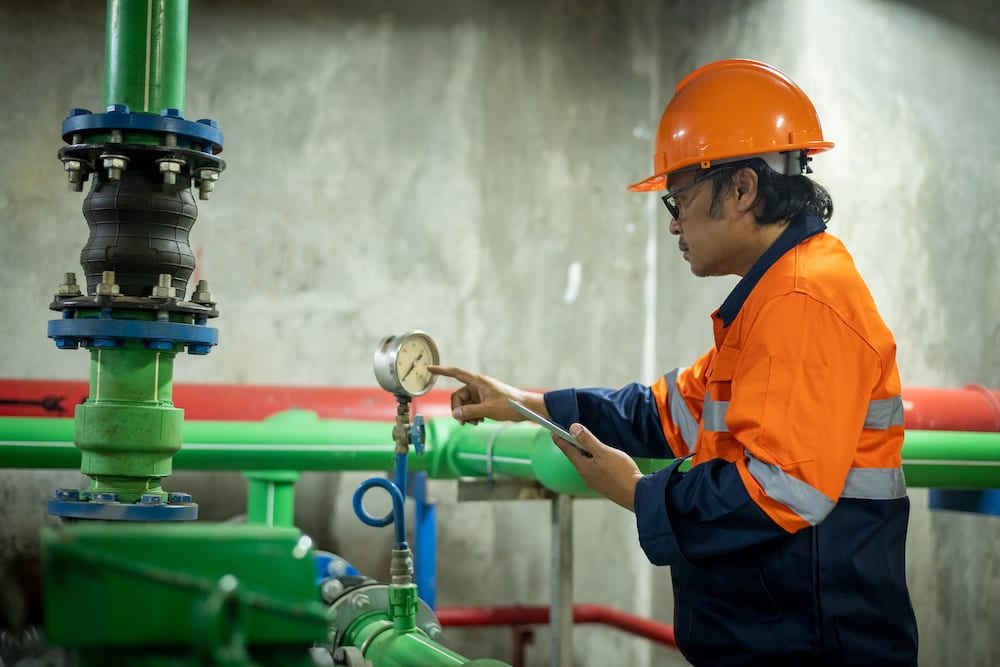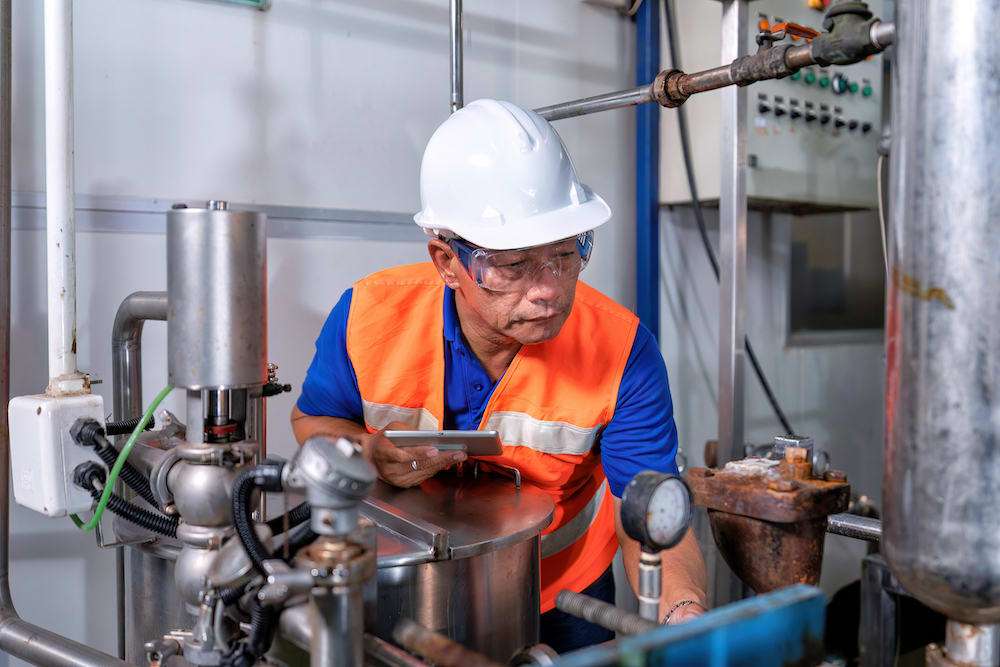- Published 5 Mar 2024
- Last Modified 5 Mar 2024
- 5 min
A Complete Guide to Gas Detectors
Ensure workplace safety in the chemical sector with RS Malaysia’s complete guide to gas detectors, covering types, usage, and detection of hazardous gases

Malaysia's chemical industry is a cornerstone of its economy, spanning from petrochemicals to pharmaceuticals, driving innovation and supporting various sectors like manufacturing and healthcare. The handling of dangerous chemicals, fumes, and flammable gases in this sector necessitates stringent safety measures, highlighting the crucial role of gas detectors in ensuring workplace safety and preventing accidents.
These devices are indispensable across diverse settings, from manufacturing plants to research labs, protecting against hazardous gases' invisible threats. By enabling the safe processing and handling of chemicals, gas detectors play a vital part in upholding the industry's safety standards, safeguarding employee well-being, and promoting the sustainable growth of Malaysia's chemical sector.

What is the Purpose of a Gas Detector
A gas detector is a critical safety device designed to monitor and detect the presence of gases in an area. They may be configured to detect any number of hazardous gases, such as carbon monoxide or hydrogen sulfide. Gas detectors serve as an early warning system, alerting employees to potential hazards and enabling timely evacuation or actions to mitigate risks. By continuously monitoring the environment, gas detectors help prevent accidents, health issues, and even fatalities, ensuring a safer workplace.

How to Prime and Use a Gas Detector
Your gas detector needs to be set up properly to ensure it is ready for use. Follow these steps to set one up and best practices for maintenance to ensure it is functioning correctly and accurately to provide protection for your team.
- Read the Manufacturer’s Instructions: Begin by thoroughly reading the gas detector's manual. Each model has its own specific setup, calibration, and maintenance requirements.
- Calibration: Perform calibration according to the manufacturer's guidelines. This usually involves exposing the detector to a known concentration of test gas to ensure accurate readings.
- Sensor Testing: Test the sensors regularly to verify their responsiveness and accuracy. Use the device's built-in test functions or a controlled gas source for this purpose.
- Battery Inspection: Regularly check the battery or power source to ensure the detector has sufficient power. Replace or recharge as needed to maintain continuous operation.
- Configure Settings: Adjust the detector to identify the specific gases you're monitoring. Set the alarm thresholds in line with your industry's safety standards.
- Maintenance Checks: Follow the manufacturer’s maintenance schedule, which includes cleaning the device, inspecting for damage, and updating software or firmware.
- Documentation: Maintain records of calibration, maintenance, and any exposure incidents for safety audits and compliance with regulations.
By meticulously preparing your gas detector for use, you ensure the safety and well-being of your team, protecting them against the dangers of hazardous gases.
Types of Gas Detectors
Gas detector alarms come in various forms, each designed to identify specific types of gases.
Combustible gas detectors are used to detect flammable gases like methane or propane to prevent fires and explosions.
Refrigerant gas detectors, on the other hand, are specialised to detect chlorofluorocarbons (CFCs) from harmful leaks in cooling systems, crucial for both safety and environmental protection.
Types of Harmful Gases and Safe Ranges
Understanding common harmful gases and their safe exposure levels is key to ensuring workplace safety, especially in chemical industries where exposure to these gases is a regular occurrence. The Department of Occupational Safety and Health (DOSH) in Malaysia provides general guidelines on monitoring airborne chemicals hazardous to health.
Each of these gases poses unique risks and requires specific attention to mitigate their potential hazards effectively. Ensuring that gas detector alarms are equipped to alert individuals to their presence before they reach dangerous concentrations is key to a healthy and secure working environment.
Carbon Monoxide (CO)
Characteristics: A colourless, odourless gas, making it particularly dangerous as it can go undetected without proper equipment.
Safe Exposure Levels: According to occupational safety guidelines, the maximum allowable concentration in the workplace is 35 ppm (parts per million) over an 8-hour workday.
Risks: Exposure can lead to symptoms such as headache, dizziness, vomiting, and in severe cases, death.
Hydrogen Sulfide (H2S)
Characteristics: Known for its rotten egg smell, it is highly toxic and flammable.
Safe Exposure Levels: The recommended exposure limit is 10 ppm for an 8-hour workday.
Risks: Low concentrations can irritate the eyes, nose, throat, and respiratory system, while higher levels can lead to shock, coma, and death.
Methane (CH4)
Characteristics: A primary component of natural gas, methane is colourless and odourless. It is highly flammable and can form explosive mixtures with air.
Safe Exposure Levels: Methane is not toxic, but it is an asphyxiant, meaning in high concentrations, it can displace oxygen in the air. Safety guidelines focus on its explosive potential rather than toxicity.
Risks: Main risks include the potential for explosions and suffocation in confined spaces.
Carbon Dioxide (CO2)
Characteristics: A colourless gas with a slightly acidic odour. While it is a natural component of air, elevated levels can be harmful.
Safe Exposure Levels: The occupational exposure limit is 5,000 ppm over an 8-hour workday.
Risks: Increased concentrations can lead to respiratory issues and, at very high levels, asphyxiation.
Gas detectors play a critical role in monitoring the environment for these gases and providing early warnings to prevent exposure that exceeds safe levels. By understanding the specific characteristics and risks associated with each gas, industries can implement targeted safety measures, including the use of appropriate gas detection equipment, to protect their workforce effectively.
Types of Refrigerants
Refrigerants are vital for air conditioning and refrigeration but can be harmful if leaked into the atmosphere. Refrigerant gas detectors are part of a suite of sustainable technology tools used to detect leaks of common refrigerants like R-22 and R-410A to ensure compliance with environmental standards by preventing the release of gases that can contribute to global warming.
Get Effective Gas Detectors from RS Malaysia
The role of gas detectors in the chemical engineering sector is indispensable. They are not just tools but lifelines that ensure the safety and well-being of employees by providing early warnings of gas exposures.
RS Malaysia offers a comprehensive range of gas detectors designed to meet the diverse needs of Malaysia's chemical industry, offering peace of mind and protection in the face of hazardous gases. Whether dealing with carbon monoxide, hydrogen sulfide, methane, or refrigerants, our products stand ready to safeguard your operations and the environment.
Explore our selection and secure your workplace today.
Popular Gas Detector Brands
MSA Safety
MSA Safety is renowned for its comprehensive range of gas detection devices, blending advanced technology with user-centric design to ensure unparalleled safety and accuracy in hazardous environments.